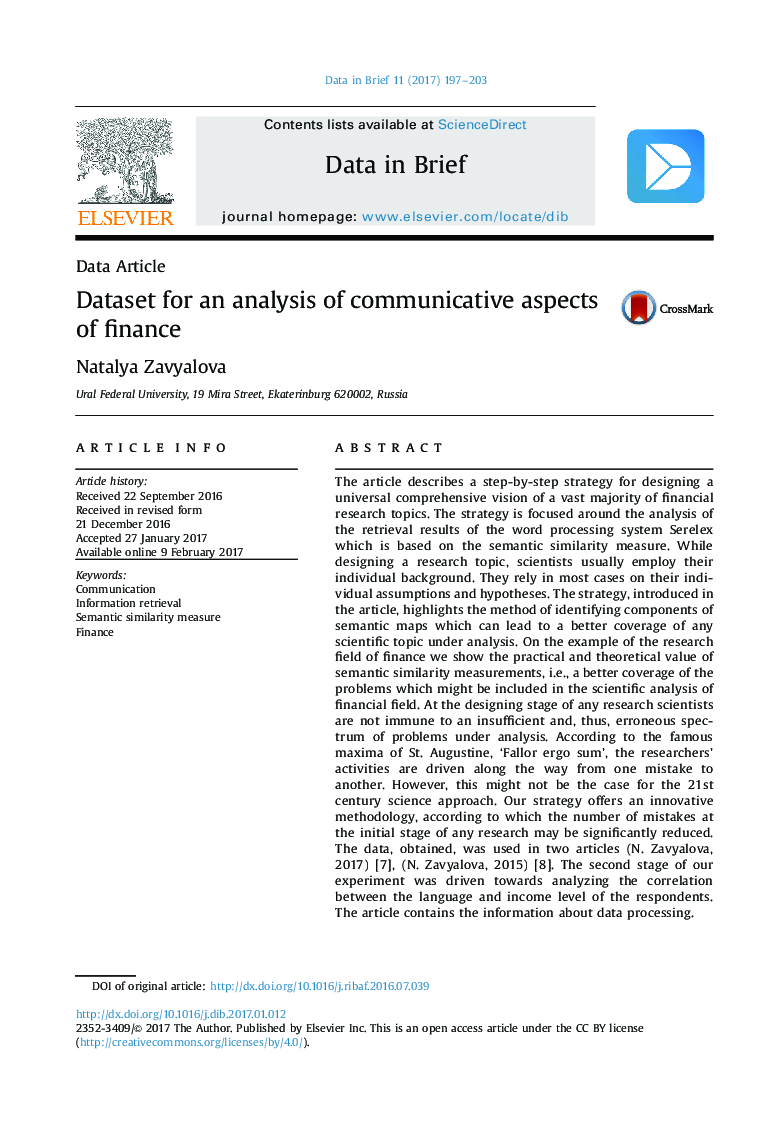| Article ID | Journal | Published Year | Pages | File Type |
|---|---|---|---|---|
| 4765351 | Data in Brief | 2017 | 7 Pages |
The article describes a step-by-step strategy for designing a universal comprehensive vision of a vast majority of financial research topics. The strategy is focused around the analysis of the retrieval results of the word processing system Serelex which is based on the semantic similarity measure. While designing a research topic, scientists usually employ their individual background. They rely in most cases on their individual assumptions and hypotheses. The strategy, introduced in the article, highlights the method of identifying components of semantic maps which can lead to a better coverage of any scientific topic under analysis. On the example of the research field of finance we show the practical and theoretical value of semantic similarity measurements, i.e., a better coverage of the problems which might be included in the scientific analysis of financial field. At the designing stage of any research scientists are not immune to an insufficient and, thus, erroneous spectrum of problems under analysis. According to the famous maxima of St. Augustine, 'Fallor ergo sum', the researchers' activities are driven along the way from one mistake to another. However, this might not be the case for the 21st century science approach. Our strategy offers an innovative methodology, according to which the number of mistakes at the initial stage of any research may be significantly reduced. The data, obtained, was used in two articles (N. Zavyalova, 2017) [7], (N. Zavyalova, 2015) [8]. The second stage of our experiment was driven towards analyzing the correlation between the language and income level of the respondents. The article contains the information about data processing.
